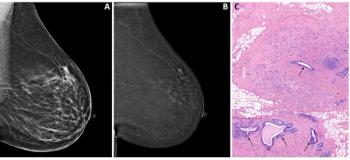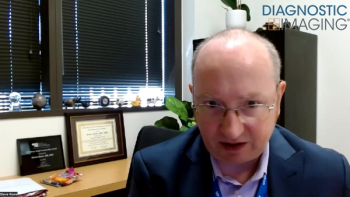
Top 5 X-ray News in 2020
What were most popular stories with X-ray this year?
Even though it has not been the predominantly discussed imaging modality during the COVID-19 pandemic this year, X-ray has still played a major part in detecting and managing the disease. All year long, researchers continued to unearth the most – and least – effective ways the modality can be used during the outbreak. But, they also investigated ways to improve its use with a variety of conditions and patient populations.
In the synopses below, refresh your memory of what happened this year with X-ray in this Diagnostic Imaging Top 5 list.
Date Published: Aug. 2, 2020
X-ray phase contrast imaging (XPCI) offers better soft tissue differentiation and tumor detection than mammography, but it requires a higher dose. To overcome this problem, researchers from China developed a convolutional neural network called XP-NET that can create a new XPCI signal extraction technique that can strengthen signal accuracy and improve X-ray dose efficiency. The tool, discussed in IEEE Transactions on Biomedical Engineering, improved phase signal accuracy by more than 15 percent.
Take-Away Message: Future potential exists for low-dose pre-clinical uses of high-quality breast X-ray phase imaging.
Date Published: Oct. 15, 2020
Radiology extenders can save attending physicians more time with chest X-rays than radiology residents can. Researchers from the University of Pennsylvania determined when cases are drafted by radiology extenders, providers are saved 51 minutes a day. Extenders finalize cases faster, leading to a 52-percent improvement in workflow rate, according to the study published in the Journal of the American College of Radiology. In addition, radiology extenders can field phone calls and communicate previous reporting findings to referring physicians.
Take-Away Message: The role for the radiology extender is likely to expand, and facilities should consider scheduling them for times when imaging volumes are highest.
Date Published: July 22, 2020
Using a deep learning automated detection algorithm can help providers detect more lung cancer with chest X-ray, reducing the likelihood of unnecessary follow-up CT imaging. Not only did initial detection of cancer improve when researchers for Korea tested it with radiologists and radiology residents in a study published in Radiology, but providers caught more previously missed cancers, as well.
Take-Away Message: The tool is designed to help all providers catch more cancers, but early-career radiologists and those who do not have a sub-specialty in thoracic imaging are more likely to benefit the most.
Date Published: April 14, 2020
Chest X-rays taken in COVID-19-positive patients can appear normal or only reveal mild disease. In a Journal of Urgent Care Medicine study, Ohio State University College of Medicine researchers examined chest X-rays performed in an ambulatory population because that is the setting where most people will initially seek treatment for COVID-19-related symptoms, and they found that, when using X-ray, providers determined 89 percent of scans were negative or mild.
Take-Away Message: Radiologists should be aware that most COVID-19-positive patients can have little-to-no evidence of infection on X-ray.
Date published: May 14, 2020
For young and middle-age patients, chest X-ray can predict who is at higher risk for developing severe disease and requiring intubation. Using a six-point scoring system based on dividing X-rays into six zones, Mount Sinai researchers were able to categorize patients by disease severity. According to their study in Radiology, patients with the highest scores were 6.2 times more likely to be hospitalized and 4.7 times more likely to be intubated.
Take-Away Message: For patients between ages 21 and 50, chest X-ray can help providers determine who will need the most resources for fighting COVID-19 infection.
Newsletter
Stay at the forefront of radiology with the Diagnostic Imaging newsletter, delivering the latest news, clinical insights, and imaging advancements for today’s radiologists.






























